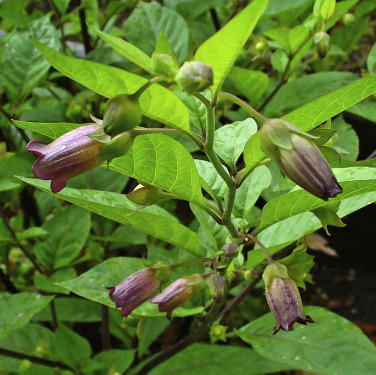This short article considers first aid with ‘Belladonna’ a homeopathic remedy for fever (and more). This is a remedy commonly found in homeopathic first aid kits available from pharmacies such as Ainsworths and Helios
Please read my initial article in this series, if you have not already done so
The homeopathic remedy Belladonna originates from the plant of the same name. Its common name is ‘deadly nightshade’. Poisonous plants often make the best medicine!
The plant contains the alkaloid atropine, a form of which is used to dilate the pupils in an eye examination. Italian ladies used the plant for the same reason, thus enhancing their allure, and so we have Bella Donna (beautiful woman).
Prepared homeopathically it is another fever remedy. It is similar, yet different, to Aconite – which I covered in an earlier blog.

Classical homeopathy prescribing follows the natural law of similars. This means that you select the remedy by matching its picture to the symptoms of the patient.
Every homeopathic remedy has both mental / emotional and physical characteristics. The patient will not exhibit every characteristic of the remedy. Just capture the general theme.
Try to establish three out of the following four:
Belladonna is a great homeopathic remedy for fever in children. The Belladonna state requires the strong vitality that is characteristic of young children. At the other end of the age range, the Belladonna state is rare to find. Indeed the elderly may not have the vitality to throw a fever, if they have it is a good sign.
Remember that the body fights infection through fever (raising the temperature of the body). Except in extreme circumstances a fever should not be suppressed. Current NHS guidance recognises this.
For the late Dr RAF Jack, Aconite was his No1 recommendation for fever, and Belladonna ranked No2. Dr Jack (see below) was a GP who used homeopathy extensively in his Bromsgrove practice in the 1950s to the 80s. He provided all his patients had a basic kit of homeopathic remedies (available on the NHS then).

And both these remedies are prefereable to paracetamol albeit requiring a little more knowledge in their use.
Where the Aconite patient has anguish and restlessness, Belladonna in contrast has rage! The onset is slightly slower than that of the Aconite type of fever.
A pill can be dissolved in the mouth (typically 30c potency). Better is to dissolve a pill in a little water and give a teaspoon to the patient. A few doses at 15 or 30 minute interval should suffice – reduce the frequency or stop once there is improvement – the body will do the rest!


This Waldorf Guide is a useful purchase. The authors give some guidance on fever in children. They say that a restless child may refuse to stay covered so need the calming presence of an adult who will tell stories etc. The child should have light clothing and bedding. Fresh air but no draughts. Give plenty of fluids (diluted fruit juice). Bland diet – but only if the child is hungry. Elsewhere, the guidance was as above plus no TV or computers – radio is ok. And most important – rest! The Waldorf guide uses Anthrosophical remedies which are similar to homeopathics – again Belladonna but also a Belladonna / Apis combination.